Industry
MSPO 2017: Light and Mobile “Kusza” Anti-Aircraft System
“Kusza” mobile missile system has been presented during the MSPO 2017 event in Kielce. It is a solution that is capable of providing autonomous air defence for the military elements that are conducting their operations independently.
“Kusza” [Crossbow] MSR (Mobilny System Rakietowy - Mobile Missile System) has been developed as own initiative by the Centrum Rozwojowo-Wdrożeniowe Telesystem-Mesko Sp. z o.o. [Telesystem-Mesko Implementation and Development Centre], working together with the Mesko S.A. company and Institute of Optoelectronics of the Military University of Technology.
The whole system is modular and compact, making it possible to set up the launcher on light vehicles (with a weight of up to 3.5 tonnes) and platforms. Thanks to the above fact, the said solution may also be utilized by the Territorial Defence Component, on light vessels, or in case of improvised points of resistance. “Kusza” provides the user with anti-aircraft protection at altitudes of up to 3500 metres at distances of up to 5-5.5 kilometres (“Grom” missiles) or up to 6 kilometres (“Piorun” missiles).
“Kusza” Layout
The concept of a light anti-aircraft missile system has emerged after the “Grom” MANPADS launcher was introduced into the inventory of the Polish Armed Forces. “Grom” missiles began to be set up on a variety of platforms, which expanded their combat capabilities.
In this way, a twin-cannon ZUR-23-2 system was modified into the ZUR-23-2KG “Jodek-G” solution. The ZSU-23-4 “Shilka” system was upgraded to the ZSU-23-4MP “Biała” variant. Moreover, ZUR-23-2SP “Jodek” solution has been used as a base for the “Pilica” combined AAA/SAM system, meanwhile “Grom” MANPADS launchers were utilized to create the “Poprad” SAM system.
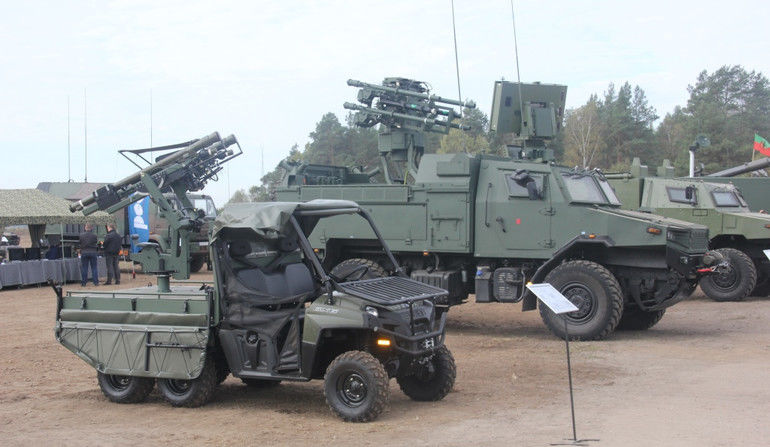
“Kusza” is, at least to some extent, similar to the “Poprad” system and other similar weaponry of this class (such as the French “Atlas” and “Atlas-RC” system, US-made DMES - Dual Mount Stinger, or Russian “Dzhigit” and “Strielets” solutions). The designers, the work of whom has been led by professor Zbigniew Puzewicz, PhD, Eng., have decided to create an anti-aircraft module that would be suitable to be mounted on vehicles the GVW of which is defined as 3.5 tonnes or less.
“Grom”/”Piorun” twin missile launcher and a targeting-tracking unit were to act as the foundation for the solution, with the targeting system making it possible to observe and track targets at night and during the day. The said unit has been placed on a special-purpose rotating column, also used as a support for the seat of the weapons operator. Thanks to the said design solution, the operator may remain ready to shoot for longer periods of time, in comparison with a troop who holds a MANPADS-class launcher on his shoulder. The whole system is placed within a special-purpose case, the weight of which is defined as 400 kilograms - missiles and extra equipment included.
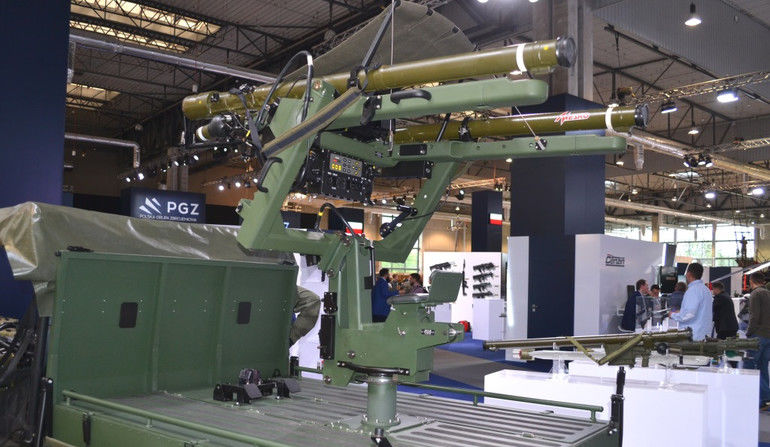
At the initial stage of works, a complete MSR “Kusza” system has been fitted onto a light 6-wheels Polaris Defence “Ranger 800” vehicle. The vehicle itself weighs around 700 kilograms, its dimensions are as follows: length 3.48 metres, width: 1.52 metres, height: 1.93 metres. When one adds the fuel weight and two fully equipped soldiers, as well as the transport box, we obtain a mobile and lightweight air defence suite, weighing no more than 1300 kilograms.
“Kusza” MSR system is manned by two persons: driver-weapons operator and operator-weapons operator, who, during movement, are seated in seats protected solely by a roll-cage and a protective cover, isolating the driver from the hot gas that may be created by the missiles during the launch. When shooting is conducted, the operator leaves his seat and sits on the seat installed on the missile base.
“Kusza” System Capabilities
The operator/shooter is the primary limitation, in case of any of the MANPADS systems. He needs to identify and detect the target and to carry a launcher in his shoulder, with the whole system weighing several kilograms. Not only is creation of mobile MANPADS systems freeing the operator from the weight on his shoulder, but it also enhances his situational awareness, as a mobile platform may additionally feature extra sensors or an IFF system.
In case of the MSR “Kusza” platform this has been done in an innovative way, as a steel column features a light platform with missiles. The said platforms consists of three main parts - WR beam, fork-platform and the proper platform itself.
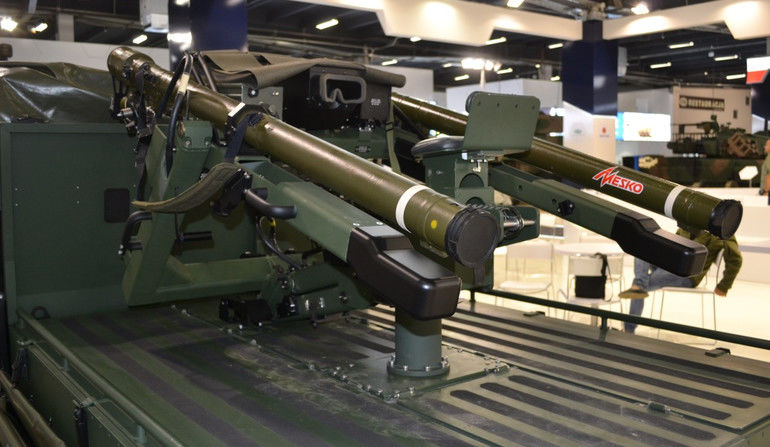
The column-base acts as a support for the rotating WR beam which, on one side has an operator’s seat installed, while on the other it features a vertical base for the missiles and for the optronic observation system. The aforesaid assembly features two framework-platforms created out of steel profiles, with each of the platforms taking on a distinctive “U” shape. The lower frame (fork platform) mounted onto the WR-beam base at a specific angle is a fixed base for the elevation rotated (-10° to +60°) platform-proper.
The said platform also carries most of the system-specific equipment. The arms of the frame of the platform-proper feature missile supports (holding missiles placed in the standard launch cases), with ground-based PSUs and autonomous launch mechanisms. The top part of the transverse frame features the observation and targeting suite.
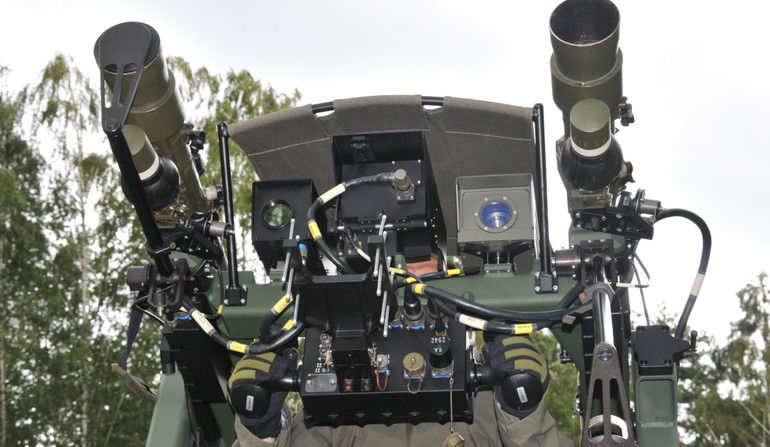
The aforesaid suite features a reflector sight (developed by the CRW Telesystem-MESKO facility), coupled with secondary iron sight and integrated with a deployable LCD screen that overlays the daytime and night sight imagery over the reflector (daytime sight with 1-20x zoom and bolometric thermal vision sight operated at wavelengths of 8÷12 μm with 2x and 4x digital zoom and detection range of up to 10 kilometres). The display also visualizes the data on the system’s status and mode of operation.
The whole system has been designed in a way that limits the light emission from the targeting system, to make it more difficult to detect the launcher during night operations. It is quite important, as the “Kusza” system features a fully passive sensor package, meaning that the enemy would not be aware of its presence until the moment of launch comes. There is also an option of receiving the targeting data from the IADS command system.
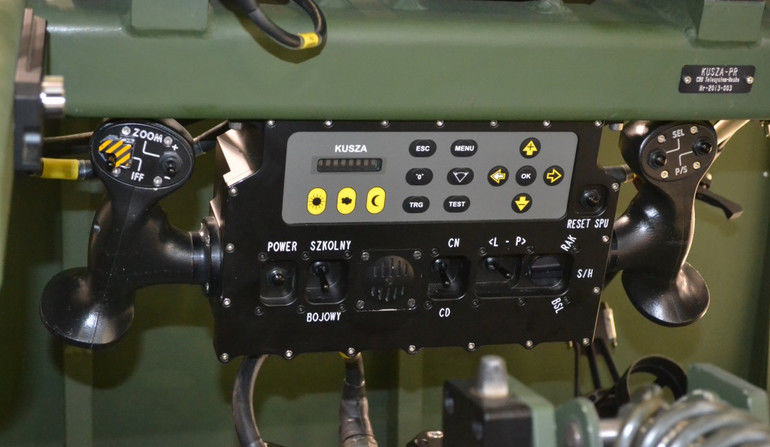
Under the transverse portion of the frame of the platform, a control panel has been slung, with interrogator’s antenna attached, along with the launch mechanism and two handles held by the operator when the system is active. The whole structure is balanced and placed on bearings, allowing the operator to move it with the use of his muscles only.
Alongside the column and frames, the transport portion of the vehicle also carries the main PSU, batteries and a charger, as well as an electricity generator. The batteries allow the system to stay in the stand-by mode for at least 3 days, at external temperature of 20 degrees Celsius.
The transport compartment also features cases for four missiles (two for the launchers and two spares), eight ground power supply blocks and standard launch mechanisms, allowing the user to launch the missiles from a shoulder, in a conventional MANPADS setting.
“Kusza” System - Mounting and Transport
Kusza may be transported by the medium C-295M airlifter, or by heavy CH-47 Chinook and CH-53 Sea Stallion helicopters. Once the rollcage is remover, Kusza may also be carried by medium helicopters, such as Mi-8, Mi-17, Sikorsky S-92 or NH90. This is facilitated by the missile frame design that may be folded to the back, without a need of removing the launchers or the coupled equipment. In a transport setting the sides of the transport compartment are lifted up and covered by a fabric cover, placed over the metal-pipes external frame. In practical terms, “Kusza” platform may leave the launch position in no more than 10 seconds. Roll-cage is the highest component of the vehicle, during the vehicle movement.
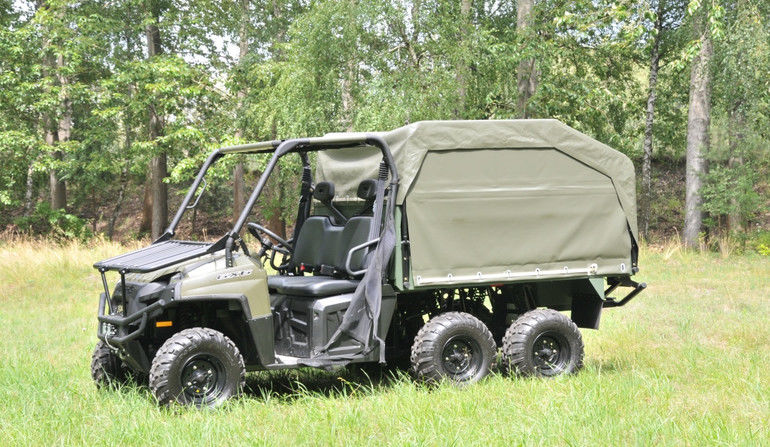
Changing the position of the missile system, from transport to combat setting - with the missiles placed on the frame, should not take more than 20 seconds. On the other hand, to fully prepare the system, but with the missiles-mounting step included, one needs no more than 90 seconds.
All of the system’s components, including the sensor suite, are ready for operation after around 5 seconds. This is time which is equivalent to the time required to prepare the missile to fire.
Upgrading the “Kusza” System
Representatives of the Telesystem-MESKO company declare that deliveries of the “Kusza” system for the user may begin in one year. The company also claims that the system may be modified and developed, to meet the end-user requirements.
The upgrades may concern both new observation and targeting and C4ISR systems, as well as selection of a new platform, on which the “Kusza” system is to be placed. Polaris Defence “Ranger 800” light all-terrain vehicle was the first platform as such, utilized for test purposes. However, the assessment and feedback provided, among other potential users, by the Polish special operations forces, a decision was made to extend the operational range of the system by mounting it onto a Toyota Hilux pick-up truck. This has been done in collaboration with the Concept Sp. z o.o company that has previously been redesigning the Toyota Hilux vehicles for the Polish Special Forces component.
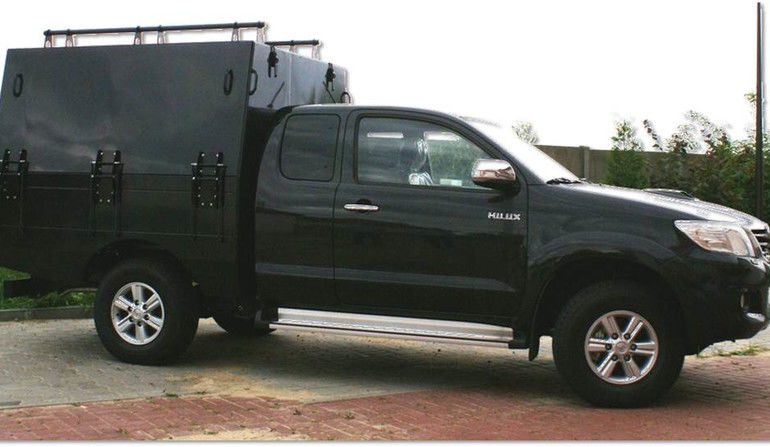
For the purpose of installing the “Kusza” system onto the vehicle, the transport compartment has been modified to accommodate the weapon, moreover cases for transporting 6 missiles placed in launch tubes, 12 ground power supply blocks and 2 standard launch mechanisms, have also been arranged on the vehicle. The whole package is covered by light-alloys covers that hide the system from potential observers, making the vehicle appear to be a non-military platform.
WR beam and column have been redesigned, along with the fork and proper platform, so that lifting the whole system up to the combat position would take place with the use of a foot pedal, while closing is facilitated by clamps. Moreover, which has been a novelty, automated missile mount has been applied, allowing for launches in safe mode with the use of secondary iron sight and power supply unit.
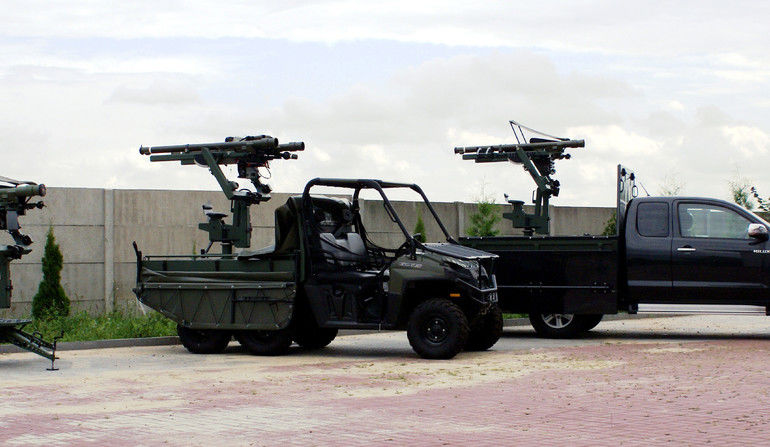
The last variant of the “Kusza” system features the whole package mounted on a special-purpose tripod. Thanks to such solution, the system may be easily used within protected structures, on vehicles, railway platforms, or even vessels. The stationary variant of the system consists of three modules: platform, beam with the launcher on a base, along with the power supply unit, with the heaviest of the elements weighing less than 40 kilograms. The kit may be hence carried by two soldiers. The base platform itself features four stabilizing outriggers too.
When it comes to the equipment integrated within the “Kusza” system, at the test stage the whole kit was being used with a portable short range IKZ-02 IFF interrogator, developed by the Polish PIT-RADWAR S.A company. The designers have also created a kit that has been integrated with the Rega-3 and Rega-4 terminals used for automation of the operation of the air defence systems (along with assigned communication suites and GPS receiver), and external sensors, such as a radar for preliminary detection of the targets or passive optical “alerter” (at the test stage this role was played by the CORAL CR system offered by the Elbit ElOp company, installed on a separate tripod support).
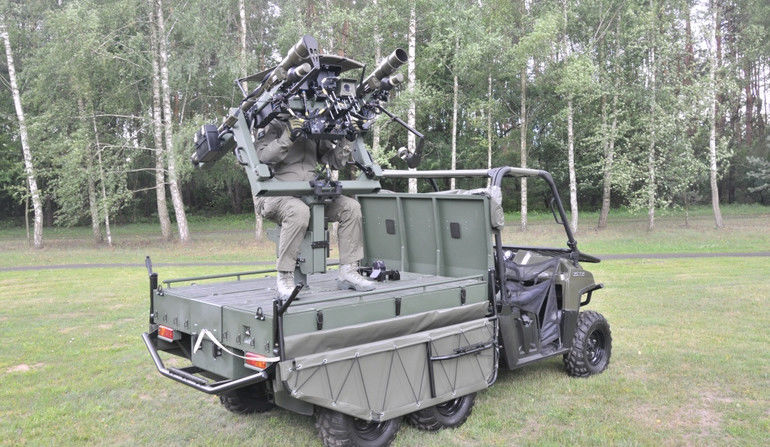
There is also a great freedom of choice, when it comes to selection of the cameras that are coupled with the “Kusza” solution. For example, one may use a MWIR thermal vision camera, however the designers also make it possible to record the imagery obtained from the targeting system. A specialized computer is also being developed continually, playing the role of the heart of the system, fusing all of the building blocks into a single, integrated suite.
Representatives of the Telesystem-MESKO company suggest that “Kusza” could easily become an air-defence asset for the Territorial Defence (WOT) component of the Polish Army, as it may be easily fitted onto light vehicular platforms, even on vehicles lighter than 3.5 tonnes. At the same time, the fire control system allows for autonomous use of the system also in tough weather conditions and at night. Alternatively, Kusza may become a part of the IADS.
The article has been written on the basis of the materials provided by the Telesystem-Mesko Sp. z o.o. company.

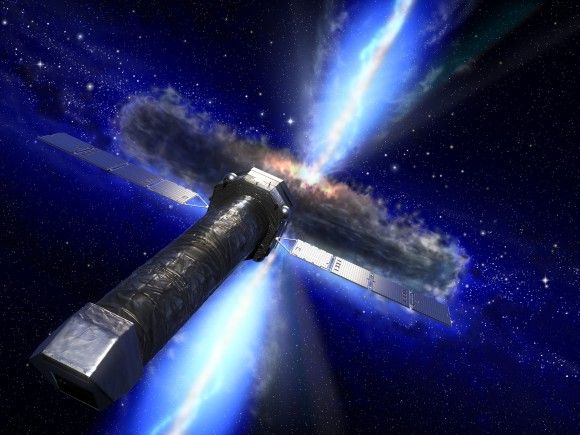
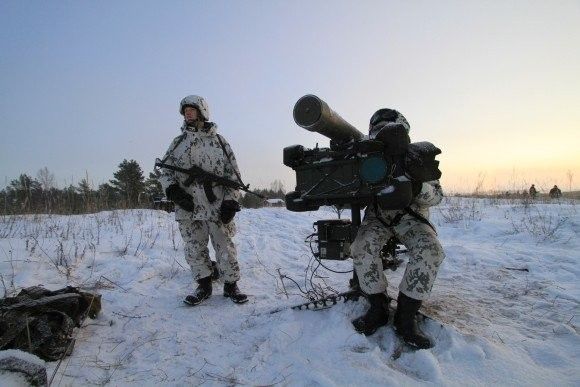
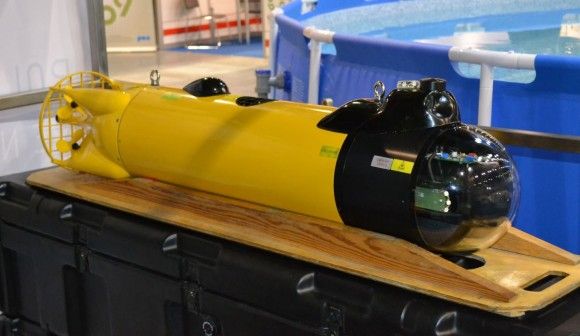
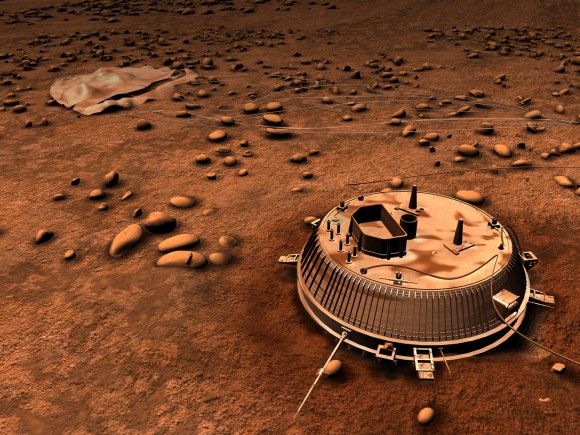
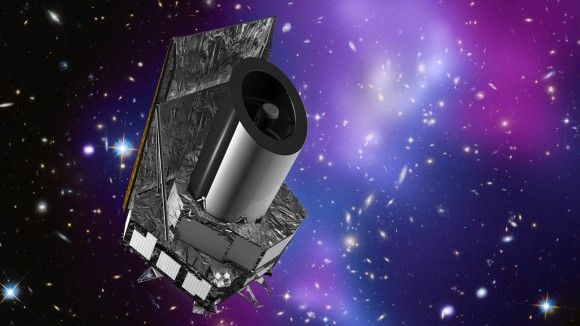
![Fot. TTcomm SA [ttcomm.net]](https://cdn.defence24.pl/2021/01/15/580xpx/2021/01/15/originals/uOxHU5hXIlLToibk236E6DHKp9AHQyYjvwKgHQEU.mb1f.jpg)